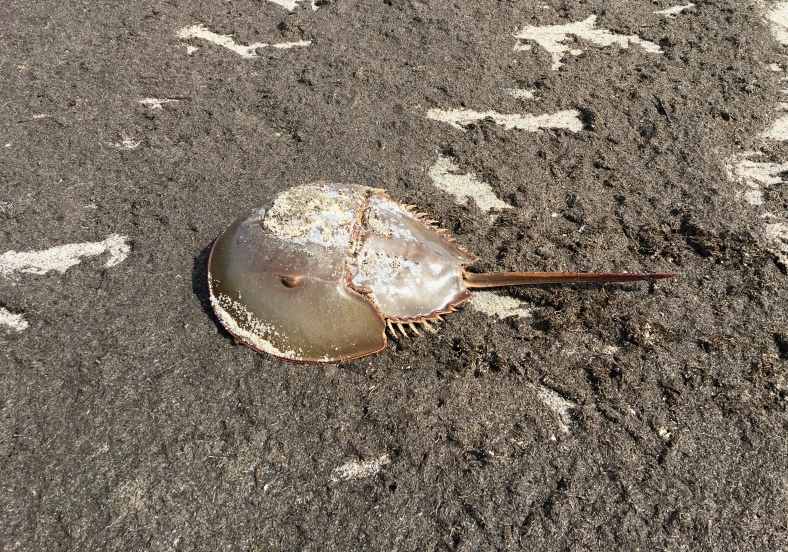
I’m again reminded at how fast “nature” attempts to undo our efforts at civilizing the world. When we recently returned home to Chesapeake country after six months in Florida the meadow around the house was three feet tall, the deer, red fox, and ground hog were crisscrossing the land as if it was theirs, turtles were digging nests in the the weed covered gravel driveway, and the starlings were nesting in my boat lift cover again. At least the eagle decoys had spooked the geese into the neighbor’s greener pastures

We returned late this season; the forsythia blooms were long gone and the daffodils had just passed their peak, but the peonies were still bursting upward, inches every day. The watermen on the bay had put away their oyster tongs and were now running the trotlines and netting the delectable Blue Crabs. The corn was two inches tall and it will soon be summer with crabs, sweet corn, and strawberry shortcake on the menu. But first I would have to regain control of this yard.

It occurs to me that we humans are also a part of the natural world, seeking to survive and create a safe abode. My house is in many ways similar to the Osprey nest built on the channel marker or the Barn Swallows who build their muddy home under the dock. The difference is the width of the swath our species cuts, at least in its modern version.

Another difference is our unique awareness of the effects of our swath on the world and our attempts to mitigate them. The bay is clearer and the underwater grasses more abundant than in prior decades and the air is cleaner. We can celebrate these improvements knowing that there is still work to be done.

On my recent road trip through middle America I traced in reverse the route of the European colonists who finally broke through the Appalachian Mountains at Cumberland Gap and elsewhere into the unspoiled lands of Kentucky, Tennessee, and later into Indiana, Illinois, and Missouri. They understandably cleared land for planting, hunted the abundant game, and built their hovels, filling a new niche, much different than that of their nomadic forerunners.

I crossed the mighty Mississippi and Missouri Rivers which still scoff at our human efforts to control them by periodically flooding their banks. We build dikes and dams, but cannot completely stem the flow. I birded one of these areas, Eagle Bluffs, on the banks of the Missouri, near Columbia. This is a 4400-acre wetlands and marsh providing habitat for year-long and migrating birds. A network of gravel roads on the dikes separates the numerous ponds and gives excellent views of the wildlife.

During the visit in late April waterfowl were the leading species; I don’t ever recall seeing more Blue-winged Teal. Living up to the locale’s name I saw a nesting Bald Eagle and several fishing kingfishers, but no migrating warblers.

Other birders have also wondered at the apparent scarcity of migrators this spring, but Cornell’s BirdCast has a reassuring report. Their research, including radar data, showed a whopping 400 million birds aloft on the night of May 14. “These massive flights may not, however, have produced spectacular birding on the ground…as meteorological phenomena that normally concentrate migrants are absent”. In other words, the weather has been favorable for the birds to keep pressing north rather than land and treat us birders to the typical spring show.

Standing on the banks of the Missouri I was impressed by the force of the downriver flow, draining much of our continent. One can picture the steamships of an earlier era; in fact, the “Plowboy” sunk there and is said to be buried in the sand and silt at Eagle Bluffs. I didn’t have time to dig around for it. My next stop heading east was the Audubon Museum in Henderson, Kentucky on the Ohio River perhaps a post for another day.

The recent road trip and my return to the home patch in Maryland emphasize again to me that we are not just onlookers or observers of nature, but rather full-fledged participants. In fact, a substantial partner given our relatively late arrival on the scene and our ability to alter the world for better or worse. But just when we think we are becoming the masters, the earth quakes, the tides roll in, the river valley floods, the virus spreads, the wells run dry, and we are again put in our place.






















































































































